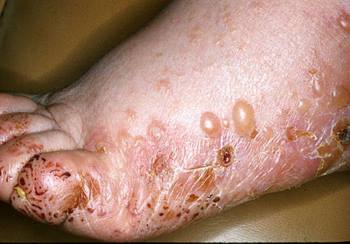
In medicine, certain terms are used to describe various skin spots and growths on the skin. Some skin diseases and infections can lead to a change in skin color.
Skin spots and growths
Atrophy is a thinning of the skin that sometimes leads to a deepening and often makes the skin appear like crumpled “parchment”.
Bullae are transparent, liquid-filled bubbles with a diameter of more than 10 millimeters (larger than bubbles).Bubbles (bullae)

IMAGE PROVIDED BY DR. MED. THOMAS HABIF.
Scab consists of dried blood, pus or skin fluid on the surface of the skin. Scab can form anywhere the skin is damaged.
Cysts are thin-walled cavities that are filled with liquid or semi-liquid material. They are often similar in appearance and texture to a bulge (a lump) in the skin.
Erosions are open skin areas that are caused by the loss of part or all of the skin layers (epidermis). Erosion often occurs with skin damage caused by infections, pressure, irritation or temperature influences. They usually heal without leaving scars.
Excoriations are erosions caused by scratching, rubbing or plucking the skin. Excoriations are often covered with scab.
Lesion is a general term for any abnormal spots or growths on the skin.
In a lichenification is skin thickening with protruding skin wrinkles or fine lines, which appear as deep grooves and furrows. Lichenification is caused by scratching or scratching for a long time.lichenification
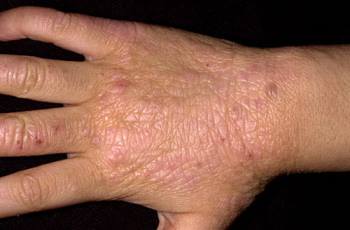
IMAGE PROVIDED BY DR. MED. THOMAS HABIF.
Maculars are flat discolored areas of different shape (skin spots) of less than 10 millimeters in diameter. Examples are freckles, flat birthmarks, fire stains and many rashes. An area is a large skin patch (more than 5 millimeters in diameter).Pimple
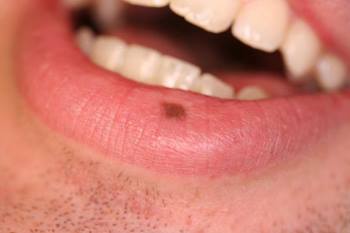
IMAGE COURTESY OF DR. MED. ROBERT MACNEAL.
Nodules are hardened raised areas that are usually round in shape. They are deeper and easier to feel than a papule. Such nodules can form under the surface of the skin and then push upwards.
Papules are hardened raised nodes less than 10 millimeters in diameter. Warts, insect bites, lichen planus and some skin cancers grow in the form of papules.papules
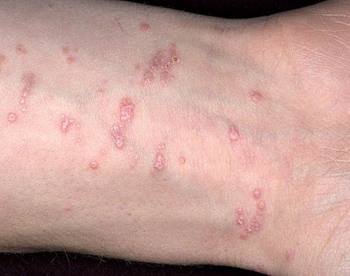
IMAGE PROVIDED BY DR. MED. THOMAS HABIF.
Plaques are flat or raised areas or groups of small nodes (papules), usually more than 10 millimeters in diameter.plaque
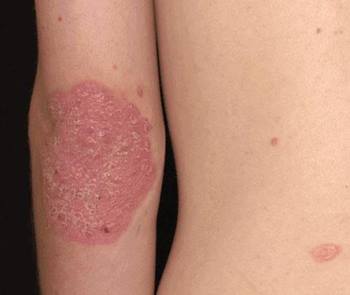
IMAGE PROVIDED BY DR. MED. THOMAS HABIF.
Pustules are fluid-filled vesicles that contain pus.pustules
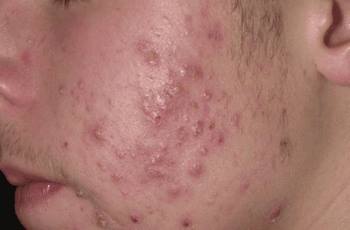
IMAGE PROVIDED BY DR. MED. THOMAS HABIF.
Scales are areas of chipped, dead epidermal cells that form flaky, dry areas. Dandruff occurs in psoriasis, seborrheic dermatitis and many other diseases.shed
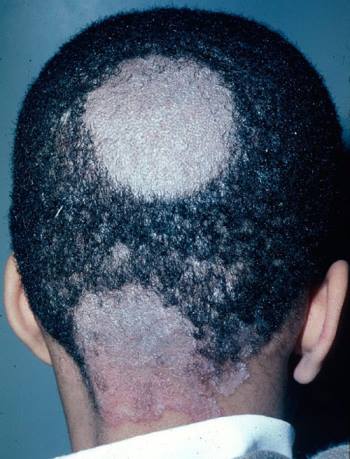
IMAGE PROVIDED BY DR. MED. THOMAS HABIF.
Scars are areas where normal skin tissue has been replaced by fibrous (scar-forming) tissue. Scars form after the dermis is destroyed.
From telangiectasia one speaks in dilated blood vessels near the skin surface, which often have a spiral appearance and lighten (blanch) when pressure is applied.telangiectasia
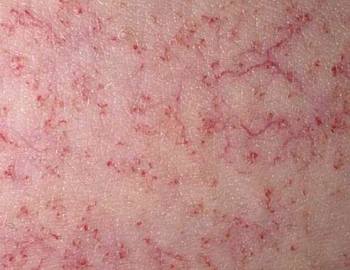
IMAGE PROVIDED BY DR. MED. THOMAS HABIF.
Ulcers are similar to erosion, but extend deeper into the skin and at least affect parts of the dermis. They have the same causes as erosions, but diseases that prevent healing, such as venous stasis , diabetes, peripheral artery disease and vasculitis, are also often involved. Ulcers usually heal without leaving scars.
Bubbles are filled with liquid, transparent, small bubbles of less than 10 millimeters in diameter. A bubble that is more than 10 millimeters in diameter is called a bulla. Herpes zoster (shingles), chickenpox, burns, allergic reactions and irritation form blisters and bullae.vesicle
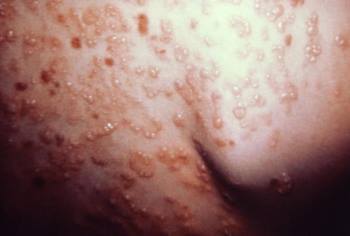
IMAGE COURTESY OF THE PUBLIC HEALTH IMAGE LIBRARY OF THE CENTERS FOR DISEASE CONTROL AND PREVENTION.
Wheals (hives, urticaria) are raised itchy red areas caused by swelling of the skin. They occur relatively suddenly and almost always disappear within 24 hours. Wheals are common allergic reactions to medicines, insect bites, or things that come in contact with the skin. If there are numerous wheals, one speaks of hives or urticaria.wheals
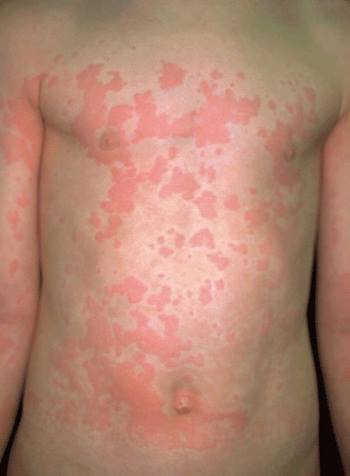
DR.’S PICTURE MED. THOMAS HABIF.
Changes in skin color
Redness of the skin (erythema) can occur in many diseases with inflammation or infection. Tumors on the skin are often pink or red. Abnormalities affecting blood vessels on the surface of the skin, such as fire stains , may appear red.
Orange skin is mostly due to hypercarotinemia. In hypercarotinemia, there is too much carotene (a pigment) in the blood, for example due to the excessive consumption of foods that contain a lot of beta-carotene (carrots).
Yellow skin can occur in patients with jaundice . The causes of individual yellow areas are, for example, xanthelasmas and xanthomas (small yellowish fat deposits in the skin or tendons).Xanthelasma
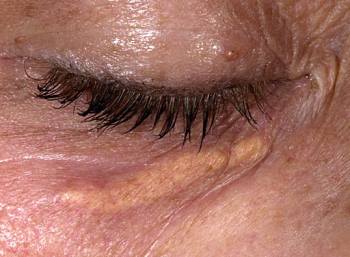
DR.’S PICTURE MED. THOMAS HABIF.
Green fingernails are usually caused by infection with the bacterium Pseudomonas aeruginosa .
Purple skin may be due to bleeding in the skin (cutaneous hemorrhage) or vasculitis . Overgrowth of blood vessels, such as Kaposi’s sarcoma and hemangioma , can appear purple. With skin inflammation due to dermatomyositis , a dark or purple rash (heliotrope rash) with reddish-purple swellings around the eyes can appear on the face.
Blue, silver, and greyish skin tones can result from the storage of medication or metals, including minocycline, amiodarone, and silver (argyria) in the skin. Skin with poor or no blood flow is purple to gray in color. Some birthmarks and birthmarks (nevi) that sit deep in the skin can look blue.
Black skin lesions can contain special cells that produce the brown pigment melanin (melanocytes). Examples of these types of lesions are birthmarks (nevi) and melanomas . Thick, black, crusted scabs (scab) are accumulations of dead skin cells and can develop with dying tissue (infarction).HINWEIS: Dies ist die Ausgabe für Patienten.